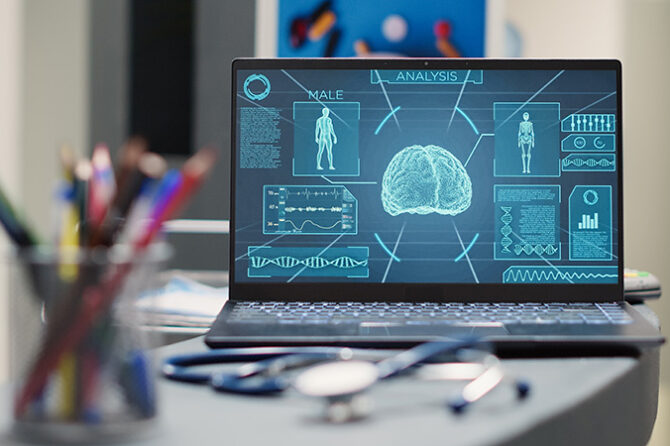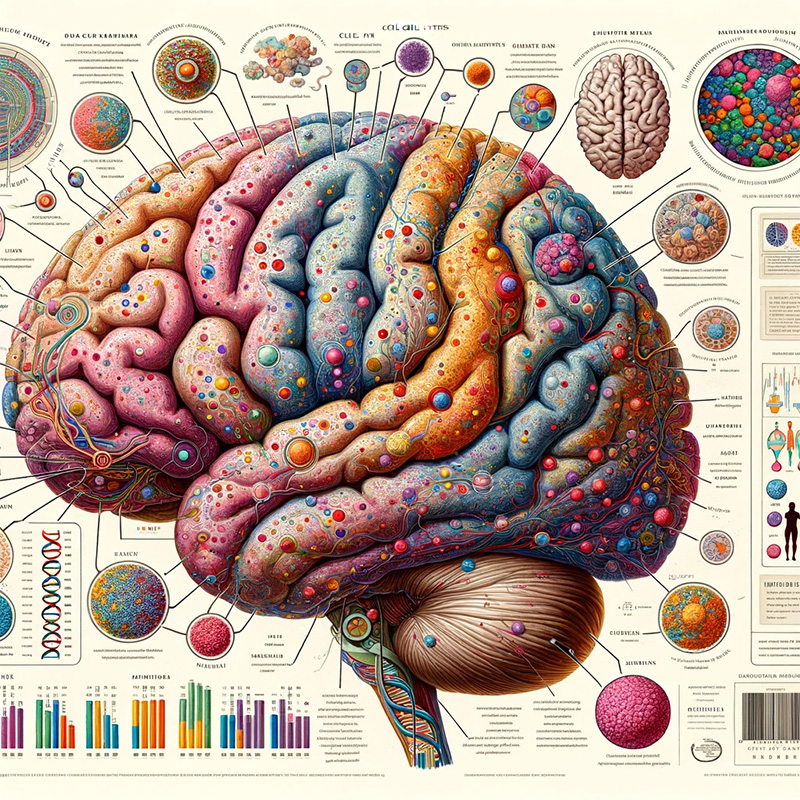
In a remarkable feat of scientific collaboration and innovation, Lawrence Tabak, D.D.S., Ph.D., provides a compelling and insightful overview of a ground-breaking project in his latest blog post on the NIH Director’s blog. His article delves into the fascinating world of the human brain, as unveiled through the ambitious efforts of the BRAIN Initiative Cell Census Network (BICCN). Tabak’s articulate narration not only highlights the complexity and intricacy of the human brain but also celebrates the collective endeavour of hundreds of scientists working towards a common goal. This work, as Tabak masterfully elucidates, is not just a leap forward in neuroscience; it is a testament to human curiosity and our unyielding pursuit of knowledge. His thought-provoking analysis offers a glimpse into the future of brain research, where the mysteries of the human mind continue to unravel, paving the way for unprecedented understanding and potential breakthroughs in treating neurological and mental health disorders.
The National Institutes of Health’s BRAIN Initiative, initiated a decade ago, aimed to develop innovative technologies for single-cell profiling to create an open-access reference atlas cataloguing the various components of the human brain. The ultimate objective was to capture a dynamic view of how different cell types in the brain are interconnected in a healthy state and how this changes in neurological and mental health disorders.
Recently, a significant collection of research from the BRAIN Initiative Cell Census Network (BICCN) was published, encompassing over 20 papers in Science, Science Advances, and Science Translational Medicine. This international effort, involving hundreds of scientists, has identified over 3,000 human brain cell types, a stark contrast to the 61 cell types found in the human lung. This work also began to reveal normal variations in individual human brains, features distinguishing various diseases, and differences between key parts of the human brain and those of related primates.

The studies include efforts to produce a comprehensive brain atlas, defining numerous brain cell types, their gene activities, and the chemical modifications affecting these activities. Other studies focus on specific brain areas. For example, Nelson Johansen and his team at the University of California, Davis, examined cells in the neocortex, finding consistent cellular makeup across individuals but also significant variation in gene activity influenced by age, sex, and health.
Yang Li and colleagues at Washington University in St. Louis analysed 1.1 million cells from 42 brain areas, identifying cell types and genetic factors linked to neuropsychiatric disorders like bipolar disorder, depression, and schizophrenia. Another study by Nikolas Jorstad and the Allen Institute in Seattle compared gene activity in human brains to that in other primates like chimpanzees, revealing similar brain cell types but different gene activations in humans, particularly in genome areas that have evolved rapidly.
All data from this research are publicly accessible online for further study. The BRAIN Initiative Cell Atlas Network (BICAN) continues to work on building a more detailed picture of brain cell types and a deeper understanding of human brain circuitry and its malfunctions. This latest installment is a significant step in the ongoing quest to comprehend the human brain, brain disorders, and their treatment, with more advancements expected in the future.
Prof. Dr. Prahlada N. B
15 Nov 2023
Chitradurga.
References / You can access the blog at the following link:
Leave a reply

















Prahlada Sir 💐
Unravelling the mysteries of mind & neurological network is an ongoing research in Neuroscience, since many years.
In this regard, it is a welcome move to have a comprehensive catalog of all cell types in the brain, through newly formed BICCN (Brain Initiative Cell Census Network).
With advanced technologies, such as single-cell sequencing, transcriptomics & connectomics……scientists can define the working of diverse cell populations in brain.
This knowledge will help in developing new diagnostic tools & targeted therapies, especially for Alzheimer’s, Parkinson’s , autism …..
This initiative of BICCN, definitely helps in navigating through the ocean of brain cells & complex nerve connections & to delve into brain even further & gain insights into how the brain circuit actually works.
Reply🤯🧠😇